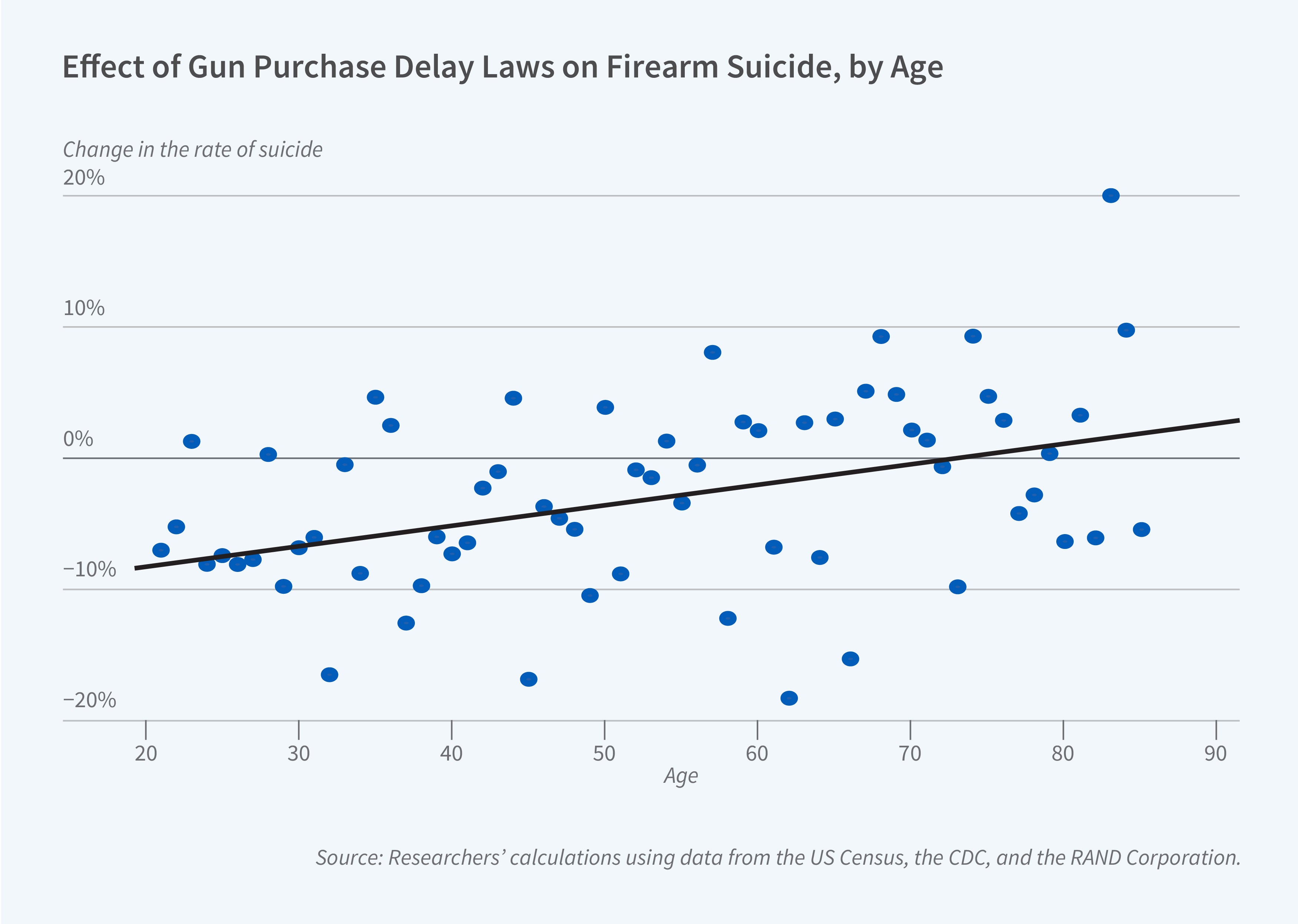Impulsivity, Firearm Purchase Delay Laws, and Suicides

According to the Centers for Disease Control and Prevention, approximately 48,000 people died by suicide in 2021 in the United States. In Age and Suicide Impulsivity: Evidence from Handgun Purchase Delay Laws (NBER Working Paper 31917), John J. Donohue, Samuel V. Cai, and Arjun Ravi study the effects of firearm purchase delay laws, which create a “buffer” period to allow for the potential dissipation of impulsive thoughts, on suicide rates. They find that these laws substantially reduce the suicide rate for those under the age of 35.
Using county-level mortality data from 1987 to 2019, the researchers examine the change in adult firearm suicide rates between the periods before and after a state implements a handgun purchase delay law. They stratify the population into three age groups: young (21–34), middle-aged (35–54), and older (55+). They estimate that purchase delay laws are associated with a 6.1 percent decrease in firearm suicide rates among young adults. There are also negative effects for the middle-aged and older groups, but they are substantively smaller — less than 3 percent in both cases — and statistically indistinguishable from zero. In the figure shown, the plotted point for each age is the estimated effect of purchase delay laws on firearm suicide. The positive slope indicates that these laws decrease in efficacy as age increases, suggesting that suicide impulsivity declines with age.
Firearm purchase delay laws decrease firearm suicide rates among young adults by 6.1 percent.
Delayed purchase laws will have a smaller effect when individuals already have access to firearms, and one explanation of the age pattern that the researchers find is that younger adults have less access to guns than older individuals. When the researchers control for the existing level of gun ownership, they reject this potential explanation and still find that the impact of delay laws declines with age.
The researchers conclude that younger adults are more prone to impulsive decisions regarding suicide and that delaying their access to firearms through purchase delay laws could be an effective method for preventing suicide.
— Leonardo Vasquez


